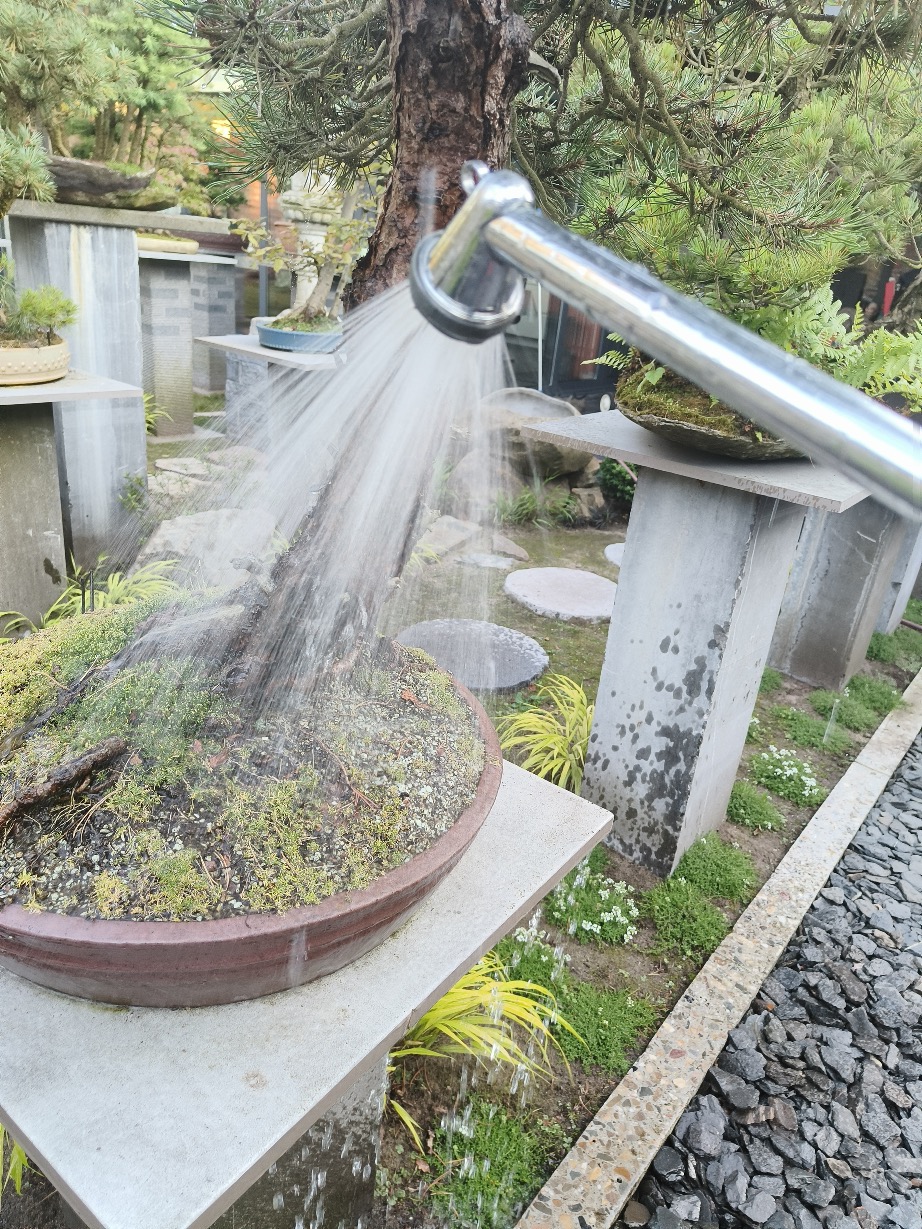-
Details
-
 Why Do Plants Need Water?
Why Do Plants Need Water?
- Metabolism and Photosynthesis: Water is essential for metabolism and photosynthesis, crucial for plant growth.
- Nutrient Transport: Water transports nutrients to all parts of the plant.
- Regulating Overheating: Plants transpire water through their leaves to prevent overheating.
- Cleaning: Water cleans the upper parts of the plant by removing dust.
Quality of Water for Watering
- pH Value: The ideal pH value for watering is between 6 and 7.5. Neutral water has a pH of 7.
- Salt Content: Good watering water is low in salt.
Water Sources:
- Tap Water: Let it stand for 24 hours to allow chlorine to evaporate and reduce hardness.
- Spring Water: Check for harmful salts before using.
- Pond Water: Regularly check pH and salt content.
- Rainwater: Slightly acidic and low in salt, ideal for watering.
Plant-Specific Water Needs
- High Lime Water (pH around 7.5): Suitable for Taxus baccata, Cornus, Juniperus Sabina, Prunus, English oak.
- Lime-Free Water (pH 4.5 - 5.5): Suitable for Azalea, Camelia, Rhododendron, Juniperus Chinensis, Picea, Larix.
- Salt-Sensitive Species: Hornbeam, hawthorn, Fagus Crenata, Picea, Taxus baccata.
When to Water?
- Morning: Water in the morning so the plant can absorb it before the heat arrives.
- Evening: Watering is possible, but do it a few hours before sunset to avoid mold formation.
- Midday: Avoid watering over the foliage of deciduous trees to prevent burning; conifers can be sprayed more often.
Watering Tips
- Vacation: Ask an experienced bonsai enthusiast to take care of the watering.
- Obstacles: Do not hide trees behind bushes or other obstacles.
- Rainfall: Adjust watering but be aware that rainwater doesn't always reach the soil surface due to the foliage acting as an umbrella.
- Autumn: Reduce watering as trees lose their leaves and evaporate less.
- Winter Storage: Further reduce watering but keep roots sufficiently moist. Use snow as an insulating layer on frozen root clumps.
Factors Influencing Watering:
- Tree Species: From Acer to Pinus.
- Origin of the Species: Natural habitat conditions.
- Growth Phase: Including leaf mass.
- Garden Layout: Presence of shade trees, water features, garden walls, bonsai benches, etc.
- Tree Placement: On wooden or stone surfaces.
- Climate Conditions: Varying temperatures and humidity.
- Seasons: Seasonal changes affecting water needs.
- Soil Mix Composition: Different structures and materials.
- Pot Size and Depth: Influences water retention.
- Pot Color: Dark pots get warmer and affect moisture levels.
Summer Watering Tips:
- Water Early: Water early in the morning before the heat.
- Thorough Watering: Overwatering for a few days can be beneficial in extreme heat.
- Dry Leaf Tips: Indicate too little water.
- Burned Leaf Centers: Indicate sunburn.
- Yellow Tips in Juniperus/Pinus: Indicate root problems, consider repotting.
- Surroundings: Water the garden to create a humid environment.
- Shohin Trees: Use a tray with pebbles and water to create a microclimate.
- Cooling Pots: Use water and wet cloths to cool pots.
- Shade Trees: Plant trees like linden for natural shade, or use shade nets.
Autumn and Winter Watering Tips:
- Greenhouse Care: Pay attention to soil moisture as days lengthen and temperatures rise from January.
- Evergreens: Monitor juniperus and pinus for continued growth and potential dryness in winter storage.
 Why Do Plants Need Water?
Why Do Plants Need Water?